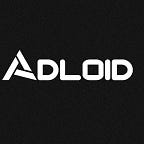ARKit & ARCore Launch. What this means for the developer community?
Augmented Reality today has reached an inflection point where all three superpowers in technology — Apple, Facebook and, Google have released AR Development kits for smartphones. It was obvious to developers that this was inevitable. We did argue about the winners and losers or who would get there first but it was obvious. Scenario took an unexpected turn earlier this year when Facebook launched it’s AR SDK and was the first one amongst the top 3 to do this. We as developers thought Google would lead this market as they were the ones who gave us the Google Glass, Google Glass 2 and Google Tango Devices. Unfortunately or Fortunately for Google, these devices were not able to please users as they were clunky and did only a few things, leading Google to a stealth mode.
Apple has always been great at pulling down a technology from nowhere and taking it mainstream. The ARkit is one such good example. The seamless end-to end control over it’s closed system of Apple paved the way to become the biggest AR platform overnight. The iPhone8 will be the first mainstream AR smartphone in history.
Apple’s Acquisition of Metaio hinted us that Apple wants to enter the AR SDK arena. When the iPhone 7 was released, we expected Apple would release an AR framework alongside it, so we immediately halted further development of our SDK for iOS
However, Google doesn’t have this opportunity. Fundamentally, Google being an open system, cannot control the assembly lines of the OEM’s and tell them what to manufacture. It does have minor control over the device market due to Pixel and Nexus but that ends there. Google launching the ARCore is its way of establishing itself in the AR Arena. Google was stringent on the Tango Device Vision and it was very hard for them to let go while we developers were waiting for Google’s platform (which is launched now as ARCore). Google thought that they could win the market of smartphones just by creating AR enabled Software and Hardware. But that’s dead now as the Tango team seems to be reassigned as ARCore team.
Google gave a preview of ARCore last week showing what the SDK is capable of given the right set of Hardware. SDK which is not production ready yet, will work with phones like Pixel, S8, and high end variants of Huawei, LG and Asus. Google aims to reach 100Mn smartphones by this winter for the preview launch. Google is fixated on quality for this one as they want to compete with the ARkit by Apple for this. But ARkit is already working with iPhone 6,7 etc. Google has a mountain to climb to reach to masses and the hardware fragmentation alone would kill Google. Android 7 is available on 50 OEM’s worldwide. How much time will it take for Google to Convince all this OEM’s to launch ARCore supported devices ASAP?
AR Developer community is delighted- Thanks to Apple and Google, AR finally will become a mainstream technology which will be used by millions of people for thousands of use cases. The best part is that now the user will be aware about what AR means as we have seen a lack of understanding in the user for the past few years.
We, as developers of AR needed our own paint and brush till now to create great AR paintings. But now, we will have the best paint and brush available to create AR masterpieces thanks to Apple and Google.
Gainers and Losers:
So what does this mean for third party AR developers?
Companies that have developed a monocular SLAM SDK for iOS will need to sunset that product. That’s pretty much it. Considering there were about a dozen companies worldwide working on that, the impact on the AR market is minimal.
In reality ARKit takes one of the biggest costs off of their portfolios, allowing them to focus on building tools and products for some of the deeper problems in AR, namely mapping.
There is more to AR than depth tracking , there are a massive number of unsolved problems and opportunities remaining for AR developers. Hard won experience in the entire process of delivering AR experiences to consumers is hugely valuable and the market is still wide open for the majority of those problems. 95% of success in AR comes through helping users and clients with 3D modelling and optimisation, content infrastructure, content delivery, rendering optimisation, user interfaces, user workflows, and partnerships. The biggest opportunities still lie in tying the ecosystems together as basic infrastructure with wide-scale maps, content, and hardware integrations.
Expect that as new AR hardware becomes available, the same arguments will come up and companies will need to rapidly anticipate and adjust. AR is such a big opportunity and such a fast growing market that understanding users and how they interact with AR is the key to winning.
From the Desk of ADLOID. Watch out for more exciting articles on AR/VR.
